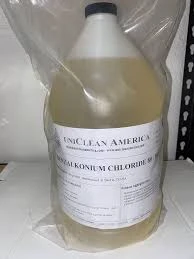Exploring the Benefits of Polyaluminum Chloride as an Effective Coagulant in Water Treatment
Understanding Poly Aluminum Chloride (PAC) as a Coagulant
Poly Aluminum Chloride (PAC) is a versatile coagulant widely used in various water treatment processes, including drinking water purification, wastewater treatment, and industrial applications. Its effectiveness, cost-efficiency, and low toxicity make it a preferred choice for many municipal and industrial plants.
Understanding Poly Aluminum Chloride (PAC) as a Coagulant
One of the primary advantages of PAC over traditional coagulants is its ability to operate effectively across a wide range of pH levels. While standard alum typically requires a lower pH to function optimally, PAC can maintain its effectiveness even in alkaline conditions. This property is particularly beneficial in areas where water sources have varying pH levels or where there are significant fluctuations in water chemistry.
polyaluminum chloride coagulant

Moreover, PAC has been shown to produce less sludge compared to traditional coagulants, making it an environmentally friendly option. Less sludge not only reduces disposal costs but also minimizes the impact on surrounding ecosystems. The compact flocs generated by PAC settle quickly, leading to shorter sedimentation times and more efficient operations in treatment facilities.
In addition to its application in water treatment, PAC finds usage in various industrial processes, such as paper manufacturing and oil recovery. In papermaking, it enhances sheet formation and improves the retention of fillers and fibers. In oil recovery, PAC aids in the separation of crude oil from water, showcasing its multifunctionality.
Despite its many advantages, it is crucial to monitor and control the dosage of PAC to prevent over-coagulation, which can lead to excessive aluminum residues in treated water. Regulatory agencies often set limits on aluminum concentrations in drinking water, and proper management practices are essential to comply with these standards.
In conclusion, Poly Aluminum Chloride is a highly effective and efficient coagulant that plays a vital role in water treatment and various industrial applications. Its ability to function across a range of conditions, combined with its environmental benefits, reinforces its position as a leading choice in the field of water management. As technology advances and the demand for clean water continues to rise, the importance of coagulants like PAC will only grow, driving further research and development in this critical area.
-
Water Treatment with Flocculant Water TreatmentNewsJun.12,2025
-
Polymaleic AnhydrideNewsJun.12,2025
-
Polyaspartic AcidNewsJun.12,2025
-
Enhance Industrial Processes with IsothiazolinonesNewsJun.12,2025
-
Enhance Industrial Processes with PBTCA SolutionsNewsJun.12,2025
-
Dodecyldimethylbenzylammonium Chloride SolutionsNewsJun.12,2025





